Newcastle‘s transformation from NSW industrial port to foodie haven
Who would have thought that a former industrial port on the NSW coast could reinvent itself as a thriving foodie drawcard? Believe it or not, Newcastle has done it in high style.
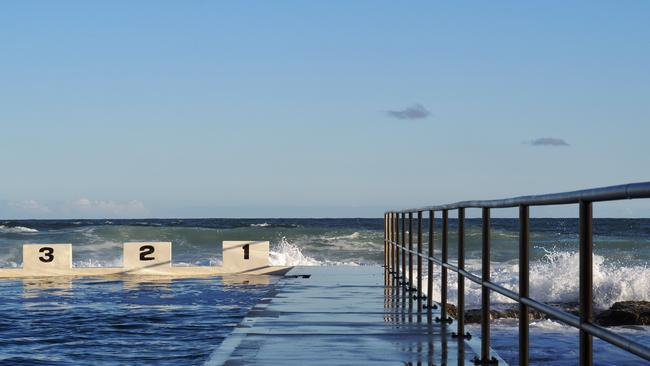
Long synonymous with heavy industry, Newcastle was that coal-dust and soot-covered town to be given a wide berth on road trips to prettier places up and down the New South Wales coast. A narrow-minded, view but not entirely without foundation. In the suburbs close to BHP’s gargantuan steelworks throughout much of the 20th century, washing could only be hung out to dry on certain days or it returned from the line dirtier than when it went into the tub. Air quality improved marginally over time, but it wasn’t until BHP quit town in 1999 that the smoke truly lifted – and Newcastle set about reinventing itself.
That’s not to say the city was without its charms. Margaret Olley famously fell in love with Newcastle the second she stepped off the train in 1964, drawn, according to those who knew her, to its topography and industrial sounds. Describing it as a “city with muscle”, the artist made it her home the following year, buying and selling terrace houses on The Hill, where she painted the Newcastle Watercolours, a series of playful scenes of the port city unfolding below. Olley donated 48 works, both her own pictures and others by established and emerging artists, to the Newcastle Art Gallery, which is currently undergoing a $40 million expansion and is slated to reopen in 2024.
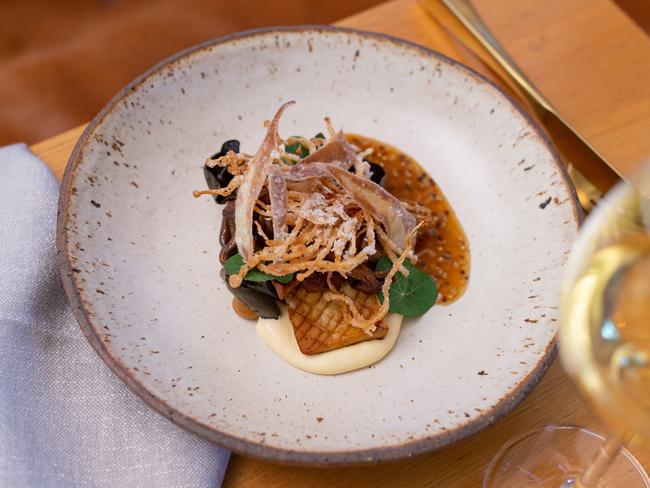
The industrial reputation lingered long after BHP turned the furnaces off, although recent gentrification has moved at lightning speed. And with good reason: lurking beneath the grime was Australia’s second-oldest city. Its centre was bursting with magnificent and intact historic buildings, surrounded by a breathtakingly beautiful coastline (Bondi to Bronte, but on some serious steroids) encompassing a soon-to-be-pristine harbour and sensational stretches of white sand. The soot-covered duck had in fact always been a swan. It just needed a quick going-over with the Kärcher.
Today’s Newcastle – Newy to its friends – is a strange and lovely hybrid of a place and when the sun shines, which is most of the time, absolutely dazzling. Olley said it reminded her of European cities; to me it reads like a cross between The Rocks in Sydney, Caloundra or Mooloolaba in the old days and, in places, San Francisco’s Russian Hill. At Merewether Ocean Baths, one of two Art Deco ocean-bathing complexes adorning Newcastle’s shores, there is a moment in the late afternoon as the sun drops behind the cliffs when you might even be in Rio. At the same time it’s quintessentially Australian – the ultimate archetype of the Aussie beach city. The world-renowned surf break just off Newcastle Beach, for example, is so spitting-distance close to the CBD that it’s not uncommon to see guys in office kit, surfboards underarm, walking down to the water.
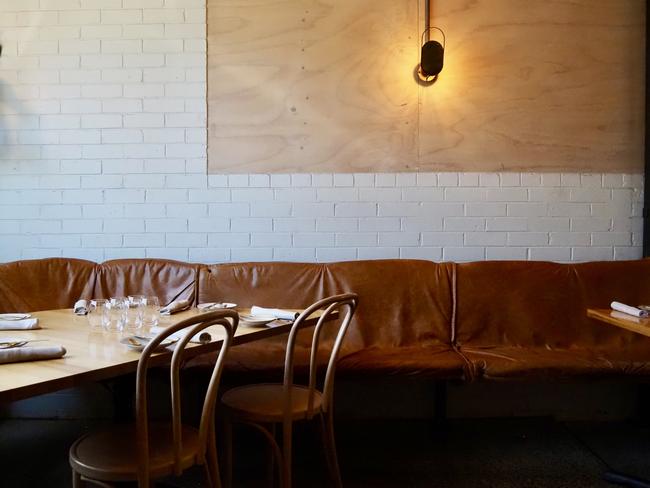
Blossoming out of nowhere like some evolutionary jump is the city’s burgeoning hospitality scene. Slick boutique hotel brands have injected life into historic buildings. There’s the sophisticated Crystalbrook Kingsley in a brutalist round tower from the 1970s, now heritage listed, and cool and quirky QT in an Edwardian department store that was once home to David Jones. Add to this a trail of coffee roasters, cafes, speakeasy joints such as The Koutetsu, gastro pubs, delis, the fabulous Cruising Yacht Club, a plethora of restaurants, and even a university eatery championing Indigenous food – all fueling the city’s ongoing metamorphosis.
With the Hunter Valley as Newcastle’s backyard, this all makes sense, although the land-of-plenty legacy stretches back long before the arrival of the Brits. Revered for its lush greenery and abundance of fish and game, the area was known for millennia as Mulubinba – “place of sea ferns” in the Awabakal language – after the mulubin, an indigenous plant described (depending on the folklore) as both a fern and a flower. The Awabakal would roast its yam-like roots in the coals of a fire and then mash them into a paste between two stones.
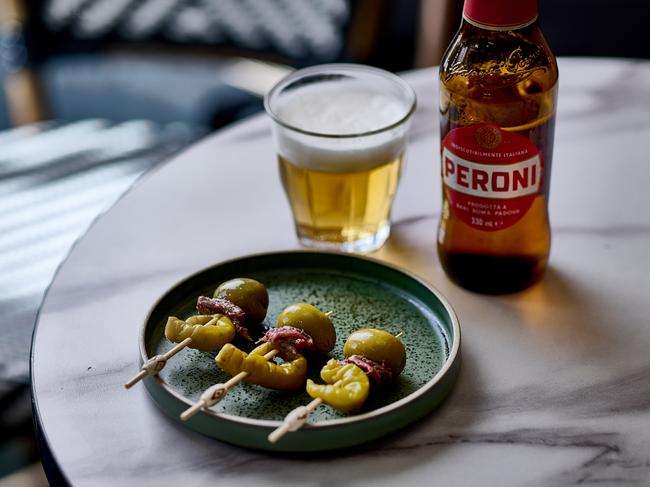
More recently, head chef Alex Hunter gave a taste of Country at Local Connections, the University of Newcastle’s surprisingly swank restaurant. He and Wonnarua and Gamillaroy man, Cory Grech from Native Foodways, concocted Edible Culture, a four-course journey through traditional foraging, ancient sustainability and the future growing practices for native food. There was also the Indigenous-inspired Plate Date of pan-roasted market fish with warrigal greens, sea lettuce and parsley butter paired with a native lychee daiquiri for $25.
Plate Date is central to Newcastle Food Month, when, each April, the city sits down to a four-week feast. Local Connections was just one of almost 50 restaurants serving signature deliciousness and a beverage for $25 throughout the month. The brainchild of Louise and Gus Maher – imports from the Northern Beaches via the Hunter Valley and now devoted Novocastrians – what began as a small regional festival three years ago is now one of the most dynamic food events in the state. More elaborate affairs take place across the city – and like Edible Culture, often involve collaborations – but it’s the oh-so- reasonable Plate Date that says everything about Newcastle’s marvellously inclusive and down-to-earth spirit.
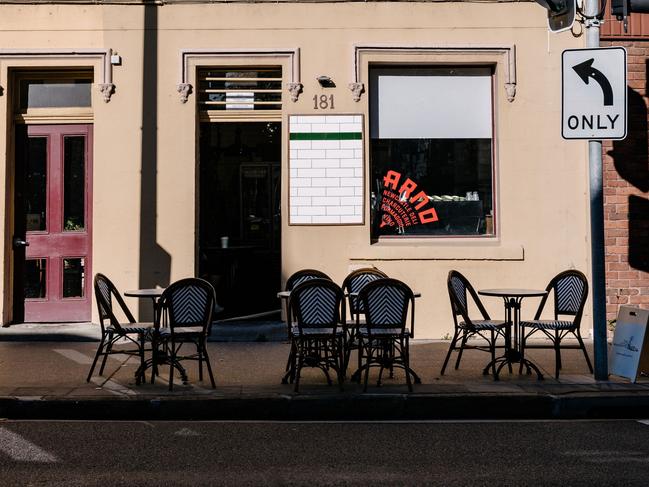
“When BHP closed, the city had to recreate itself and shed, both figuratively and literally, the dusty mantle of a steel city,” Gus Maher tells WISH. “It was then that other professions and businesses started to proliferate, and with it perhaps a changing demographic that has slowly evolved – just as we have evolved in our own homes and moved on from meat and three veg. To be honest, though, there have been ever-evolving changes, but no one outside of Newcastle knew or cared. Now everyone is talking about the city’s quantum transformation.”
Gus formed the conferencing arm of Hunter Valley Wine Country Tourism after the couple’s move from the Northern Beaches in the late 1990s, while Louise established Hunter Valley Events. They lived on land outside of Branxton until 2017 and then, tired of the big house and acres to mow after their children left for university, moved to the coast and established Newcastle Events. Gus became chairman of the Hunter Culinary Association the following year, and then in the early days of Covid he and Louise applied for a local council grant to create Newcastle Food Month. It was a win-win situation, shining a light on not just the city’s food assets but the city itself.
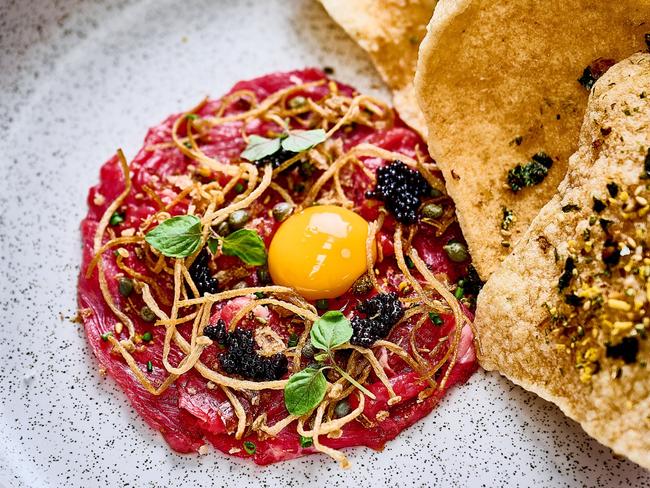
My own deep dive into the Newcastle food scene began last year at The Flotilla, recommended by a Newcastle friend who, like me, had recently moved to Murrurundi in the Upper Hunter. The restaurant itself is essentially a besser-block and corrugated iron shed in the back streets of Wickham with a beachy, industrial interior: there’s a pastel-splashed mural by the open kitchen, a wall of wine, and a slouchy banquette in loose, tobacco-coloured leather that says kick back and relax, you’re going to have a good time. Flying solo that day, I perched myself at the bar with a glass of crisp German riesling and watched sous chef Liam and his kitchen cohorts roll out the set lunch menu. Five simple but sumptuous courses included Buttermilk Fried Fish Wings, Chilli Tamarind and Peanuts – a crunchy local favourite and leitmotif in Flotilla’s ever changing menu. Next up was the super-succulent Little Joe’s Short Rib with Brassica, Soubise and Tendon Sauce. Vegetarian options – think Maple Roasted Pumpkin with Toasted Rye and Whipped Goats Cheese – were equally tantalising, a good thing as around half the restaurant had ordered it.
“When we opened Flotilla in 2020, the goal was to push Newcastle’s food and beverage scene,” says frontman Eduardo Molina. “We wanted to open a vibrant, innovative yet familiar venue that brought together everything we love about hospitality. It’s elevated but not precious, the type of place I want to go to eat. Good food, good wine and good people, because at the end, that’s what it’s all about.”
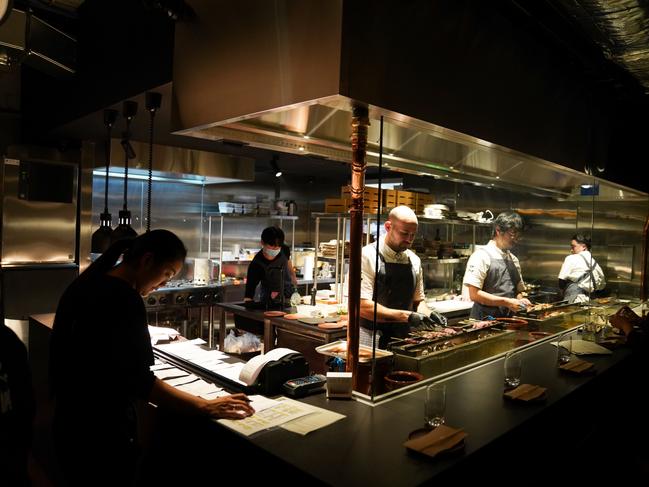
The menu of new head chef Jake Deluca is driven by big, nostalgic flavours that give the comfort-food edge to fine dining, beginning with the sourdough from local legend Uprising Bakery, served with vegemite butter. “Most importantly, he loves food, hospitality and being a chef, and it really shows in what he does,” says Molina, who has just turned the space next door into a wine and cocktail bar serving seasonal snacks and small plates – a place for a quick drink or the whole night. “It’s going to have the smart service of Flotilla in a more casual environment, to get lost in conversation with friends while drinking some banging drops.”
Flotilla sets the bar high, but it’s not alone. Humbug in Hunter Street – where Molina and his crew eat on their day off – does the fiendishly good Campanelle with King Prawn, Pork and Fennel Chilli Crunch. My death-row meal if ever I was in that movie. Their Mafaldine with Duck Ragu and Thai Basil is a close second. Also not to be missed is Humbug’s Fried Broccoli with Kimchi Vinegar, which made it onto the menu after the Koreean sous chef prepared the dish as part of the staff meal one afternoon. Michael Portley, formerly of Subo and The Edwards, rules the kitchen, while partner Stephanie Wells, whose background is in event styling and front of house, designed the restaurant’s slick and playful space as well as Humbug’s fabulous wine list championing small, low-intervention producers.
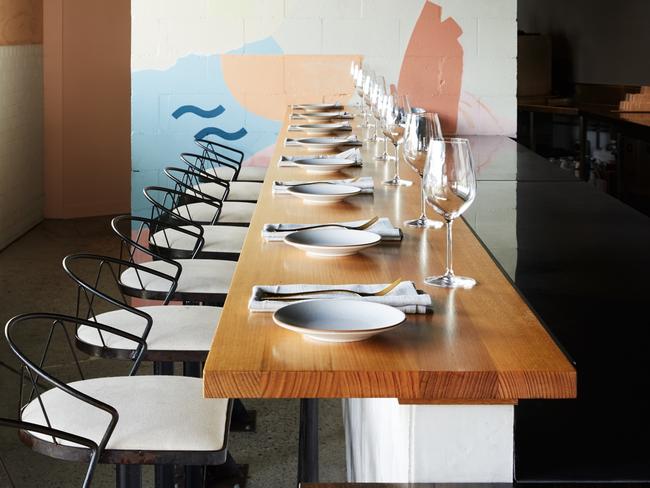
Across town in Maryville, Rina and Joel, another local couple, are behind the just-opened Elementa. Few spots in the city are as charming as the sun goes down, rowers gliding along sleepy Throsby Creek, a row of Norfolk Island Pines and a giant Moreton Bay Fig Tree in front. I went for an early dinner with a big group of foodies, sharing Elementa’s Spiced Lamb Breast, the Tomato, Nectarine+Burrata and the Hasselback Beets, with everyone in the high-expectation group suitably impressed.
The next morning we squeezed into the tiny Arno Deli in King Street. Arno traverses the regions of Italy with a dash of New York deli, over a quick espresso and cannolo in the morning or a long aperitivo later on. Panini, such as the Porchetta, Campari Glazed Ham and Provolone, are out of this world, but this deli is much more than a sandwich joint. Owner Will, described by more than one person as the nicest guy in Newcastle, has crafted a small but stellar wine list featuring rich Italian rosato and a whole section devoted to chilled reds. Super cute and retro Harrisons, slightly further afield in Hamilton, also packs some punch in a small space – the perfect go-to neighbourhood bistro for locals to splurge on a Caprese Salad and Steak Frites when they don’t want to cook.
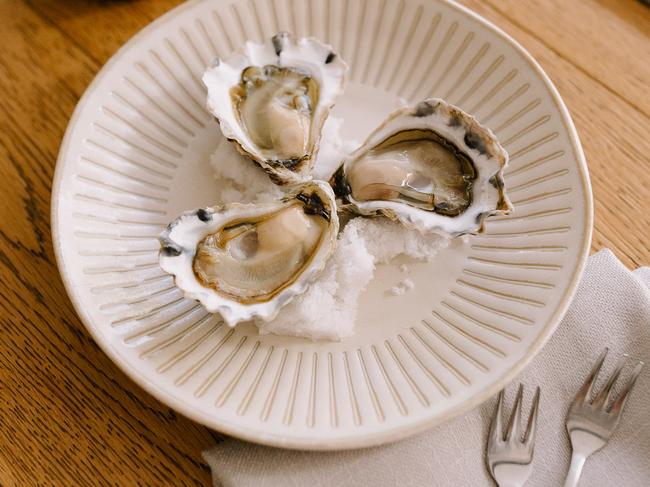
The comfort-food spirit reigned across this year’s Plate Date. There was Fancy Pants Fried Chicken at California-inspired The Lucky alongside Foghorn tap beer, or Boydell’s Verdelho, and Custom Seafood Chowder and a glass of De Iuliis Sémillon at Customs House. (The palatial former customs building, a Renaissance-inspired pile from 1877, is also a must for history and architecture buffs.) Urban Deli & Bar rolled out Lunch Balls (arancini with mushrooms and black garlic) and a glass of house wine, while the world’s finest beef, Kagoshvima A5 Wagyu, was skewered and grilled at ÂPÉ Yakitori Bar, paired with zesty First Creek Rosé overlooking the Honeysuckle Promenade.
A highlight was Earp Distilling, and not just for the perfectly timed gin and tonic handed to me and the aforementioned group of foodies on that hot day at the distillery door. You’d go to Earp for the kitchen alone – juicy Hervey Bay Scallops with Sambal Butter and Finger Lime, King Fish Cevicé and sublime Beef Tataki – although multiple plates pair perfectly with Earp’s gin, rum and vodka.
The story of the Earp family is a little like that of Newcastle itself: ever evolving and adapting to changing times, from coal export in the 19th century to overseas imports in the 20th and, more recently, high-end building materials and award-winning gin. As I was eating and drinking my way through Newcastle with the foodies, one of them recommended the Ralph Feinnes film The Menu, which I watched on a flight midway through writing this story. If you have seen it then you know it puts the whole obsessing about food in a crazy perspective. But much like the cheeseburger at the end of the film, Newcastle is a simple pleasure to be savoured and enjoyed without affectation.
“The food scene here is alive but still very young, which is exciting,” says Molina. “Can you imagine what it will be like in five years? I’m looking forward to that.


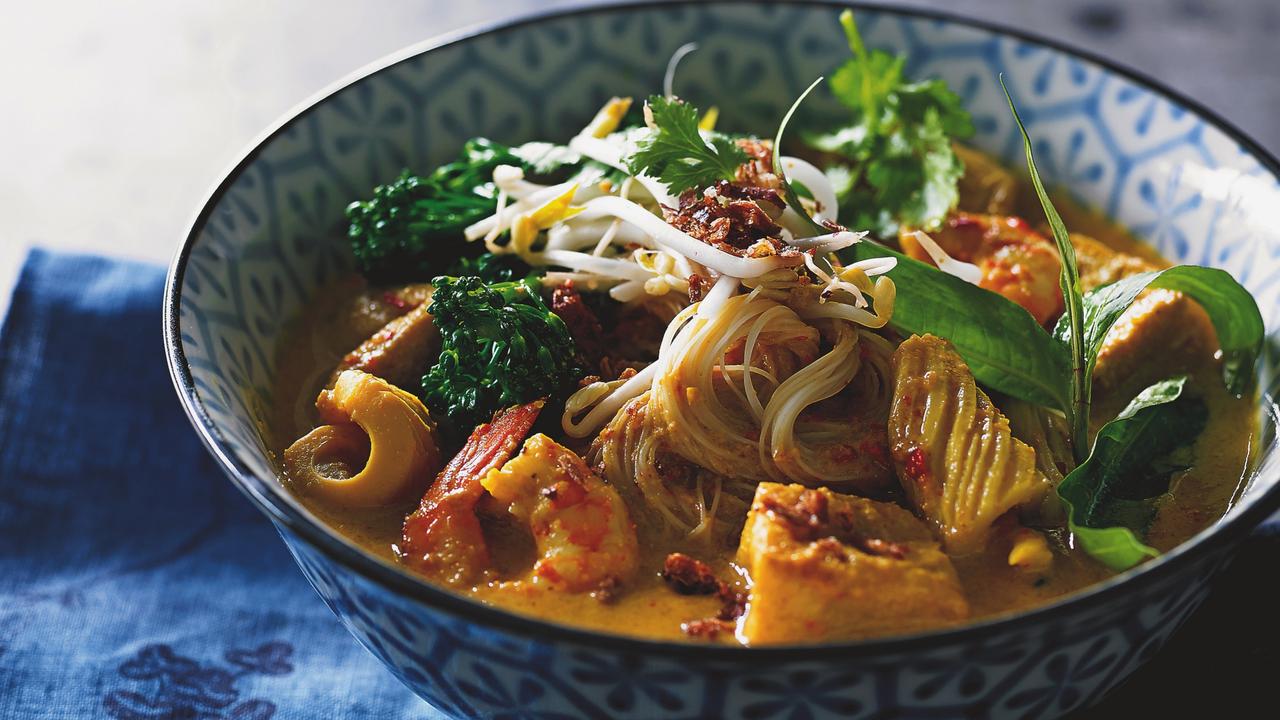
To join the conversation, please log in. Don't have an account? Register
Join the conversation, you are commenting as Logout